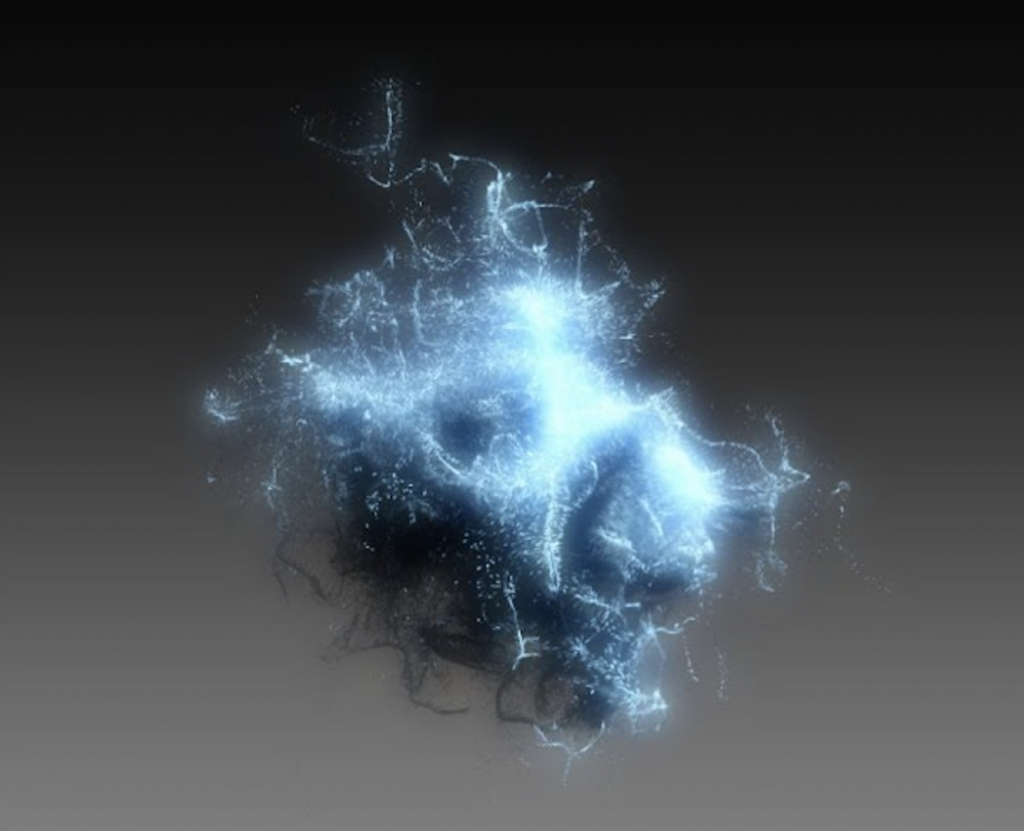
An explanation of my research experience for Undergraduates
What did I used to research?
In a nutshell, neutrinos.
Although, to be clear, I am not researching specifically all of the neutrinos in a nutshell. There are far too many. A spherical nutshell roughly the size of that of a walnut, ¾ inches (1.9 cm) in diameter or thereabouts, would find itself permeated by just over 237 billion of them every second.
So, you see how the neutrino is easily the most abundant particle in the universe. Neutrino is Italian for ‘little neutral one,’ but the title is surprisingly monotonous in that it doesn’t seem to embody how controversially elusive they are. A much more appropriate name, in my mind is ‘fantasmino’—little ghostly one.
This is quite the introductory diatribe. But what exactly are neutrinos?
Let’s start with something comparatively large—an atom. At the compromise of the word’s etymological integrity, we’ll break the atom into subatomic particles called protons, neutrons and electrons. The former two particles are split even further into a characteristic mixology of sub-subatomic particles called quarks (pronounced ‘corks.’ Unless you’re British, then it’s an emphatic ‘kuh-warks’).
“Neutrino is Italian for ‘little neutral one,’ but the title is surprisingly monotonous in that it doesn’t seem to embody how controversially elusive they are. A much more appropriate name, in my mind is ‘fantasmino’—little ghostly one.”
Physicists call particles of this infinitesimally small stature ‘elementary particles.’ As far as we know, elementary particles are the smallest building blocks in the universe. They cannot be broken down any further. (But that’s what we said with the atom, so I wouldn’t put too much weight on it).
Now electrons are, technically speaking, even smaller than quarks (although the mass of a quark is a bit too complicated to describe here). Imagine, however, that an electron were about as massive as a pineapple. A neutrino would have no more mass than that of a grain of sand.
Just like quarks, neutrinos are a class of elementary particle. Also like quarks, neutrinos are very small. So, it makes sense that in the Standard Model—the prevailing physical theory concerning the four forces of nature (gravity, electromagnetic, strong and weak) and the nature of those forces—neutrinos are akin to quarks in terms of how they fit into the universe.
Now stay with me, here. I know this is a lot of physics in a short amount of time. But basically, neutrinos are the faeries of physics; they’re petit, ubiquitous and peevishly difficult to catch.
Neutrinos travel at close to, if not the speed of light, and are so abundant that approximately 66 billion of them permeate one square centimeter every second. Most of these neutrinos are remnants of the Big Bang. Others are radiating from your teeth and bones as we speak; the potassium and calcium you harbor spontaneously split into less energetically taxing elements in a process known as radioactive decay, releasing neutrinos and antineutrinos by consequence. Neutrinos are emitted from the sun and stars as products of similar decay processes.
“Basically, neutrinos are the faeries of physics; they’re petit, ubiquitous and peevishly difficult to catch.”
So why are neutrinos peevish and ghostly?
With virtually no mass, neutrinos do not interact with other masses via the gravitational force. With no charge, neutrinos cannot interact coulombically via the electromagnetic force. Since neutrinos travel so quickly and over large distances, they exclude themselves from the realm of the strong force.
Neutrinos, therefore, interact exclusively via the weak force, and pass through matter virtually undetected. In this way, neutrinos are difficult to catch. That’s why the experimentalists only succeeded in capturing one as late as 1956, and that’s what has delayed our understanding of them.
Stereotypes lead one to believe that physicists aren’t creative, given the occupational aversion to the humanities. But remember this: some physicist decided to liken different types of neutrinos to flavors (yum). Not only that, but there are six flavors of quarks accompanied by six deliciously juicy names—up, down, top, bottom, strange and charm.
Similarly, there are three confirmed flavor states of neutrinos—the electron, the tau and the muon neutrinos—each named for the particles that appear in the associated nuclear reaction. (Taus and muons are similar to electrons but more massive). Each flavor of neutrino is accompanied by a corresponding anti-neutrino. So six types, in total. Just like quarks.
So far so good, right? And then quantum mechanics gets involved and everything gets messy. (I swear, this statement is the motto of physics).
Mmkay. Essentially, the mathematical formalism of quantum mechanics dictates that we may think of neutrinos in terms of superpositions of mass eigenstates (which have well-defined masses) and flavor eigenstates (mentioned earlier). That is, each flavor eigenstate may be understood as a linear superposition of the three components representing the mass eigenstates of neutrinos, all with coefficients indicating the probability the mass state of a particle will be measured in that particular state. In accordance, therefore, with the measurement problem of quantum mechanics, the flavor eigenstates will collapse onto the reality in which it is measured. Since the product of measurement is intrinsically and nettlesomely differentiated from the state of a physical phenomena, a neutrino’s flavor may theoretically oscillate between eigenstates, thus indicating some sort of oscillation. This oscillation is proportional to the distance L traveled by the neutrino and inversely proportional to its energy E.
TL;DR: a neutrino that is measured as one flavor may spontaneously shift to a different flavor when measured later. This neutrino is therefore considered to have oscillated, thereby undergoing a neutrino oscillation.
“And then quantum mechanics gets involved and everything gets messy. I swear, this statement is the motto of physics.”
In the past thirty years, experimentalists have endeavored to track these neutrinos as they undergo oscillation. Usually, these experiments are carried out near some type of nuclear reactor, given the substantial and principally well-defined flux of neutrinos.

The problem with these experiments is that, for some reason, the neutrinos aren’t behaving as we expect. In fact, some of the neutrinos seem to just disappear, having oscillated away into some ethereal form we mortal physicists do not yet recognize.
This is the phenomenon I studied the summer of 2018 at Vanderbilt University.
Memetically speaking—as in, pertaining to meme-like discourse—I computationally model experiments in which physical faeries of different flavors (yum) jump prankishly from one flavor state to another and then suddenly disappear into thin air.
And who said physics wasn’t interesting…
“In fact, some of the neutrinos seem to just disappear, having oscillated away into some ethereal form we mortal physicists do not yet recognize.”
My research is conducted under Dr. David Ernst, a nuclear physics professor at Vanderbilt University, and funded by the Research Experience for Undergraduates program of the National Science Foundation. Dr. Ernst is a theoretician of elementary particle physics (he’s a nuclear theorist for all official intents and purposes, but only because that’s where his funding comes from. Occupational politics.)
The professor and his colleagues believe that these neutrino disappearances are suggestive of a fourth neutrino flavor state—the sterile neutrino. I say ‘believe’ with intention, for it’s quite a controversial topic in the physics community; for if there were, indeed, a fourth neutrino, the symmetry of the Standard Model would find itself compromised, thus leading to a grandiose ‘back to the drawing-board’ moment in the search for a complete, all-encompassing physical theory of the universe.
“I computationally model experiments in which physical faeries of different flavors (yum) jump prankishly from one flavor state to another and then suddenly disappear into thin air.”
Thus, Dr. Ernst is very careful in his work. He and his fellow researchers (including myself) take the conditions and results of short-baseline neutrino experiments, or experiments conducted within 30 or so meters of a nuclear reactor, and try to replicate them computationally. In doing so, we try to understand the physics that went on behind-the-scenes.
Ultimately, the long-range motivation of this research is to confirm and/or collect evidence suggesting the existence of the sterile neutrino and determine, should it exist, its mass and relative susceptibility for oscillation as compared with its three, known counterparts.
Impressive. After over 1,000 words of physics jargon, you believed enough in the wondrously little ghostly ones to endure. And thus, scripted in over 1,000 words of physics jargon is my research in a nutshell. Although since the 77,000 verses of The Illiad fit into a walnut shell as proved feasible by the Duke d’Avranches, this is light-reading, quite frankly. Better step up your game.
